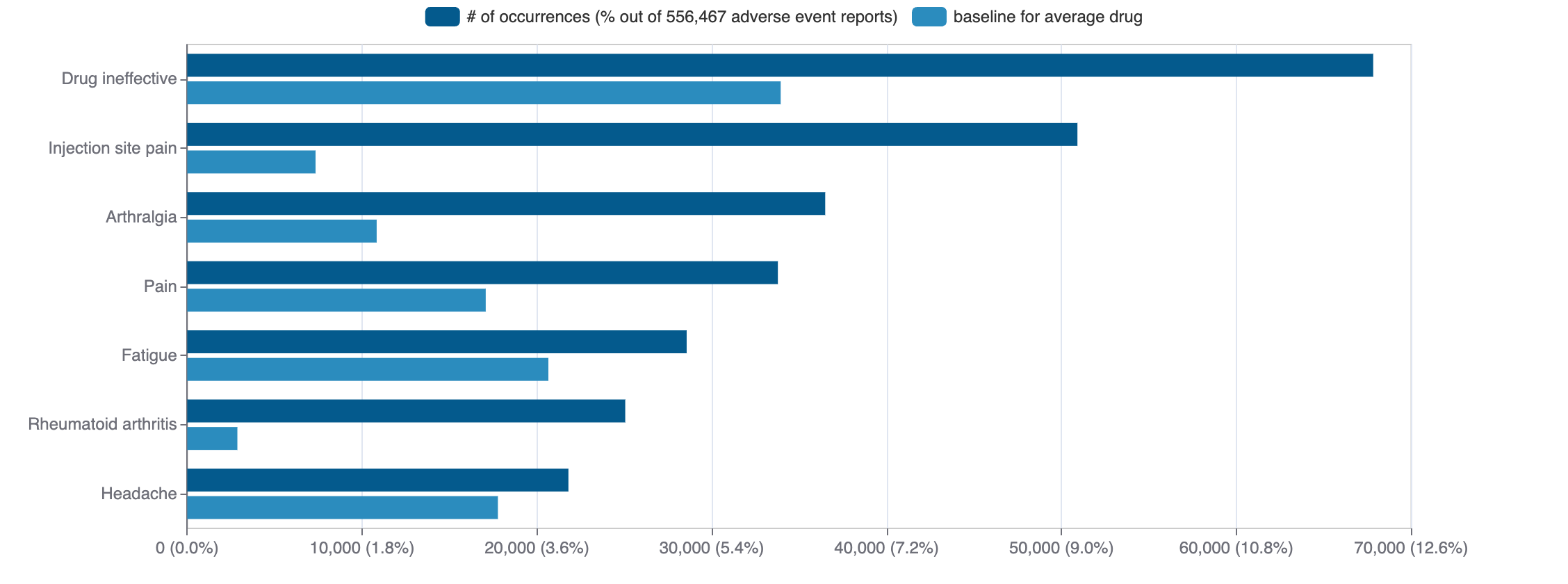Visudyne(verteporfin)
Visudyne (verteporfin) is a small molecule pharmaceutical. Verteporfin was first approved as Visudyne on 2000-04-12. It is used to treat choroidal neovascularization in the USA. It has been approved in Europe to treat degenerative myopia and macular degeneration.
Download report
Favorite
Commercial
Trade Name
FDA
EMA
Visudyne
Drug Products
FDA
EMA
New Drug Application (NDA)
New Drug Application (NDA)
Abbreviated New Drug Application (ANDA)
Abbreviated New Drug Application (ANDA)
Verteporfin
Tradename | Company | Number | Date | Products |
|---|---|---|---|---|
| VISUDYNE | Bausch Health Companies | N-021119 RX | 2000-04-12 | 1 products, RLD, RS |
Labels
FDA
EMA
Brand Name | Status | Last Update |
|---|---|---|
| visudyne | New Drug Application | 2023-02-24 |
Indications
FDA
EMA
Indication | Ontology | MeSH | ICD-10 |
|---|---|---|---|
| choroidal neovascularization | — | D020256 | — |
Agency Specific
FDA
EMA
No data
Patent Expiration
No data
HCPCS
Code | Description |
|---|---|
| J3396 | Injection, verteporfin, 0.1 mg |
Clinical
Clinical Trials
58 clinical trials
View more details

Mock data
Subscribe for the real data
Subscribe for the real data
Indications Phases 4
Indication | MeSH | Ontology | ICD-10 | Ph 1 | Ph 2 | Ph 3 | Ph 4 | Other | Total |
|---|---|---|---|---|---|---|---|---|---|
| Macular degeneration | D008268 | EFO_0001365 | H35.30 | 3 | 13 | 8 | 6 | 3 | 31 |
| Choroidal neovascularization | D020256 | 1 | 5 | 4 | 1 | 1 | 10 | ||
| Vascular diseases | D014652 | EFO_0004264 | I77 | — | — | — | 1 | 1 | 2 |
Indications Phases 2
Indication | MeSH | Ontology | ICD-10 | Ph 1 | Ph 2 | Ph 3 | Ph 4 | Other | Total |
|---|---|---|---|---|---|---|---|---|---|
| Breast neoplasms | D001943 | EFO_0003869 | C50 | — | 1 | — | — | 1 | 2 |
| Macular edema | D008269 | — | 1 | — | — | — | 1 | ||
| Glioblastoma | D005909 | EFO_0000515 | 1 | 1 | — | — | — | 1 | |
| Prostatic neoplasms | D011471 | C61 | 1 | 1 | — | — | — | 1 | |
| Pancreatic neoplasms | D010190 | EFO_0003860 | C25 | — | 1 | — | — | — | 1 |
| Melanoma | D008545 | 1 | 1 | — | — | — | 1 |
Indications Without Phase
Indication | MeSH | Ontology | ICD-10 | Ph 1 | Ph 2 | Ph 3 | Ph 4 | Other | Total |
|---|---|---|---|---|---|---|---|---|---|
| Central serous chorioretinopathy | D056833 | H35.71 | — | — | — | — | 3 | 3 | |
| Retinal detachment | D012163 | EFO_0005773 | H33.2 | — | — | — | — | 1 | 1 |
| Angioid streaks | D000793 | EFO_1000805 | — | — | — | — | 1 | 1 | |
| White dot syndromes | D000080363 | H30.14 | — | — | — | — | 1 | 1 | |
| Multifocal choroiditis | D000080364 | — | — | — | — | 1 | 1 | ||
| Hereditary eye diseases | D015785 | — | — | — | — | 1 | 1 | ||
| Cerebrovascular disorders | D002561 | EFO_0003763 | I60-I69 | — | — | — | — | 1 | 1 |
| Corneal neovascularization | D016510 | EFO_1000880 | H16.4 | — | — | — | — | 1 | 1 |
Epidemiology
Epidemiological information for investigational and approved indications
View more details
Drug
General
| Drug common name | VERTEPORFIN |
| INN | verteporfin |
| Description | Verteporfin (trade name Visudyne), a benzoporphyrin derivative, is a medication used as a photosensitizer for photodynamic therapy to eliminate the abnormal blood vessels in the eye associated with conditions such as the wet form of macular degeneration. Verteporfin accumulates in these abnormal blood vessels and, when stimulated by nonthermal red light with a wavelength of 689 nm in the presence of oxygen, produces highly reactive short-lived singlet oxygen and other reactive oxygen radicals, resulting in local damage to the endothelium and blockage of the vessels.
|
| Classification | Small molecule |
| Drug class | benzoporphyrin derivatives |
| Image (chem structure or protein) | |
| Structure (InChI/SMILES or Protein Sequence) | C=Cc1c(C)c2cc3nc(cc4[nH]c(cc5nc(cc1[nH]2)C(C)=C5CCC(=O)O)c(CCC(=O)OC)c4C)C1(C)C3=CC=C(C(=O)OC)C1C(=O)OC.C=Cc1c(C)c2cc3nc(cc4[nH]c(cc5nc(cc1[nH]2)C(C)=C5CCC(=O)OC)c(CCC(=O)O)c4C)C1(C)C3=CC=C(C(=O)OC)C1C(=O)OC |
Identifiers
| PDB | — |
| CAS-ID | 129497-78-5 |
| RxCUI | 118886 |
| ChEMBL ID | CHEMBL2218885 |
| ChEBI ID | — |
| PubChem CID | 73416975 |
| DrugBank | DB00460 |
| UNII ID | 0X9PA28K43 (ChemIDplus, GSRS) |
Target
Agency Approved
No data
Alternate
No data
Variants
Clinical Variant
No data
Financial
No data
Trends
PubMed Central
Top Terms for Disease or Syndrome:

Mock data
Subscribe for the real data
Subscribe for the real data
Additional graphs summarizing 5,978 documents
View more details
Safety
Black-box Warning
No Black-box warning
Adverse Events
Top Adverse Reactions

Mock data
Subscribe for the real data
Subscribe for the real data
6 adverse events reported
View more details
Premium feature
Learn more about premium features at pharmakb.com
Learn more
